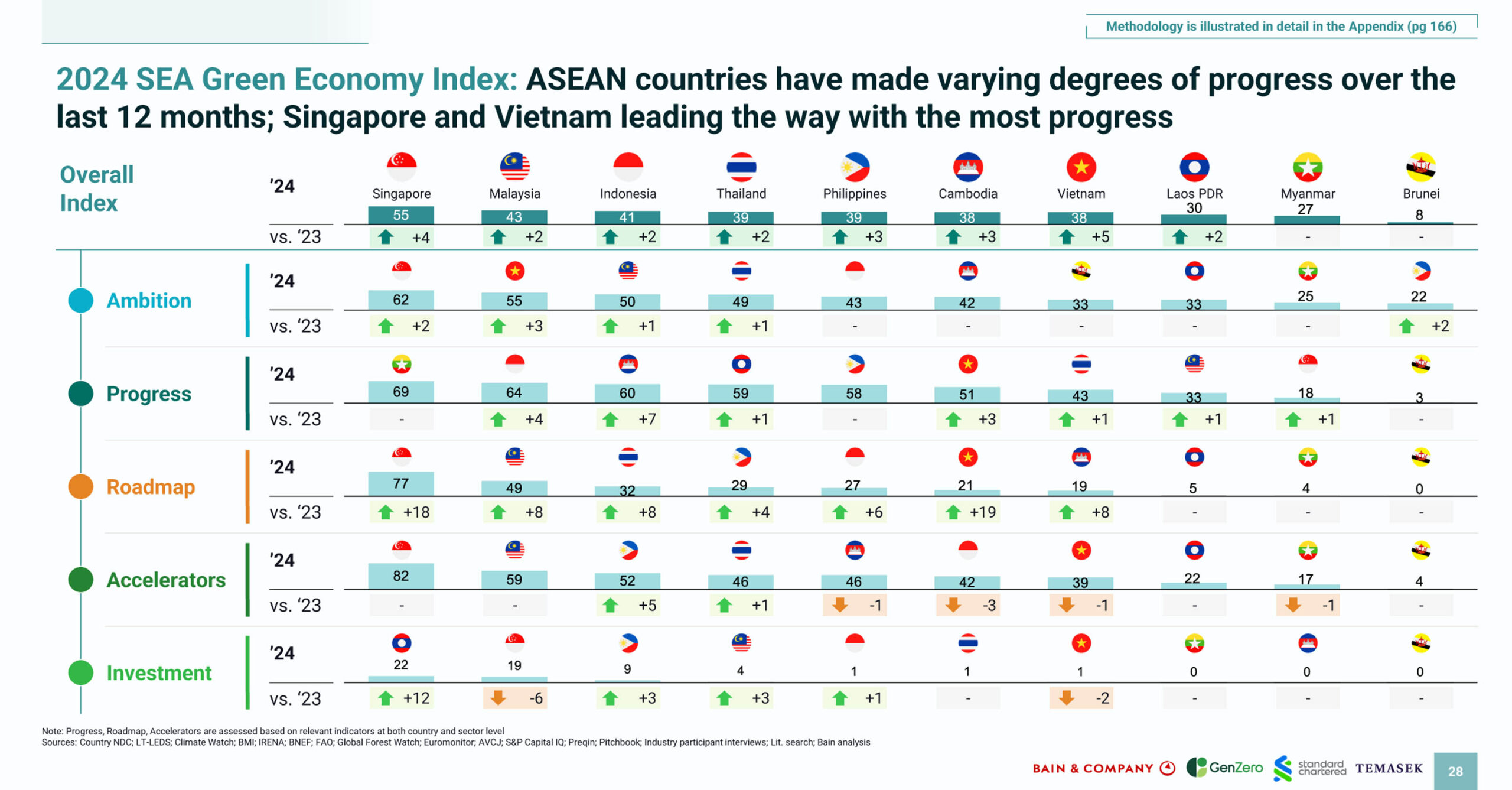‘Green economy’ rankings: How does PH fare in the region?

According to the first Southeast Asia Green Economy Index unveiled in Singapore last week, the Philippines is fifth among the 10 countries evaluated.
The index examines how each country is progressing across five metrics—ambition (20 percent), progress (25 percent), roadmap (20 percent), accelerator (25 percent) and investment (10 percent).
It forms part of the report titled “Southeast Asia’s Green Economy 2024–Moving The Needle,” prepared by Bain & Company, GenZero, Standard Chartered and Temasek and presented during Singapore’s hosting of Ecosperity Week 2024.
The report covers 10 economies: Brunei, Cambodia, Indonesia, Laos, Malaysia, Myanmar, the Philippines, Singapore, Thailand and Vietnam.
Legacy dependencies
“The index helps provide an objective snapshot of how each country is performing year-on-year and relative to peers. It shows an overview of areas where they are doing well and recognizes where progress is being made. It is important to note that this index is constantly evolving as the region continues to tweak initiatives to fit the respective markets’ needs,” said Dale Hardcastle, director of the Global Sustainability Innovation Center at Bain & Company, which is based in Singapore.
Article continues after this advertisementAccording to the report, the Philippines has made great strides in increasing investments toward greening the economy and in formulating roadmaps. But it scored lowest in terms of ambition, which suggests the need for it to be more ambitious in its goals to decarbonize.
Article continues after this advertisementAs a region still with legacy dependencies on fossil fuel for power generation, Southeast Asia needs to balance economic growth and the costs of transitioning to renewable energy. In the Philippines, coal still accounts for some 42 percent of the energy mix, thus requiring massive investments if it is to wean itself away from fossil fuels.
Predominant investment
Across Asean, an additional $1.5 trillion will be required by 2030 to support such transitions and achieve ambitious climate goals, according to Tracy Wong Harris, head of Sustainable Finance Asia, Standard Chartered Bank.
“To tap into growing opportunities, we need a coordinated and collaborative approach that builds an ecosystem where private investors and public entities can come together to act against the worst effects of climate change, leveraging catalytic capital to lower the cost of investment and de-risk commercial opportunities,” Harris said.
The report noted that while renewable energy remained the predominant green investment in 2023, there was also a marked rise in green data centers especially in Singapore and Malaysia, thanks to their energy efficiency regulations, as well as investments in wastewater treatment and plastic recycling.
The Philippines has also seen investments in green data centers, but like the rest of the region its transition story is still largely driven by new ventures in renewable energy, particularly solar and wind.